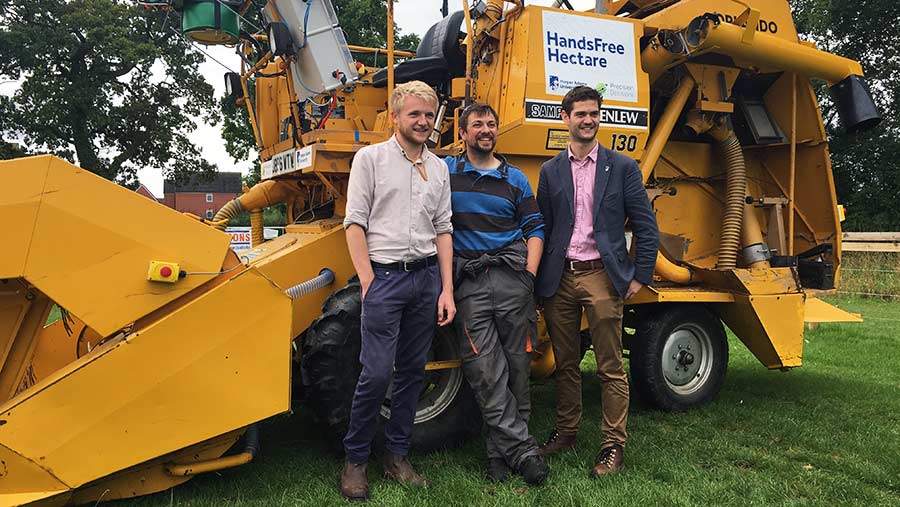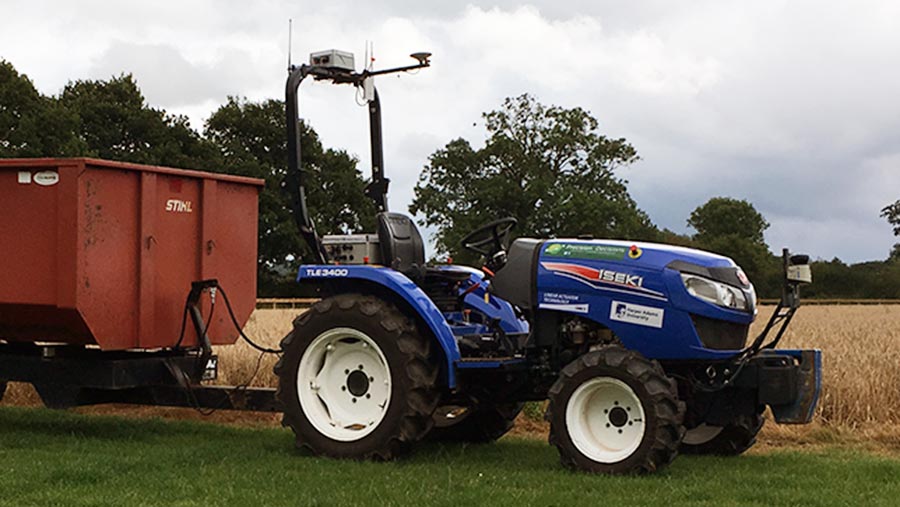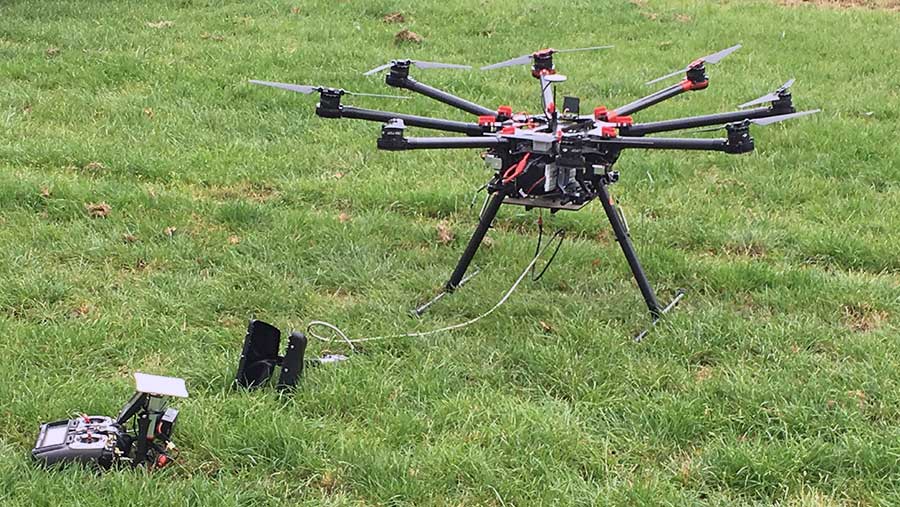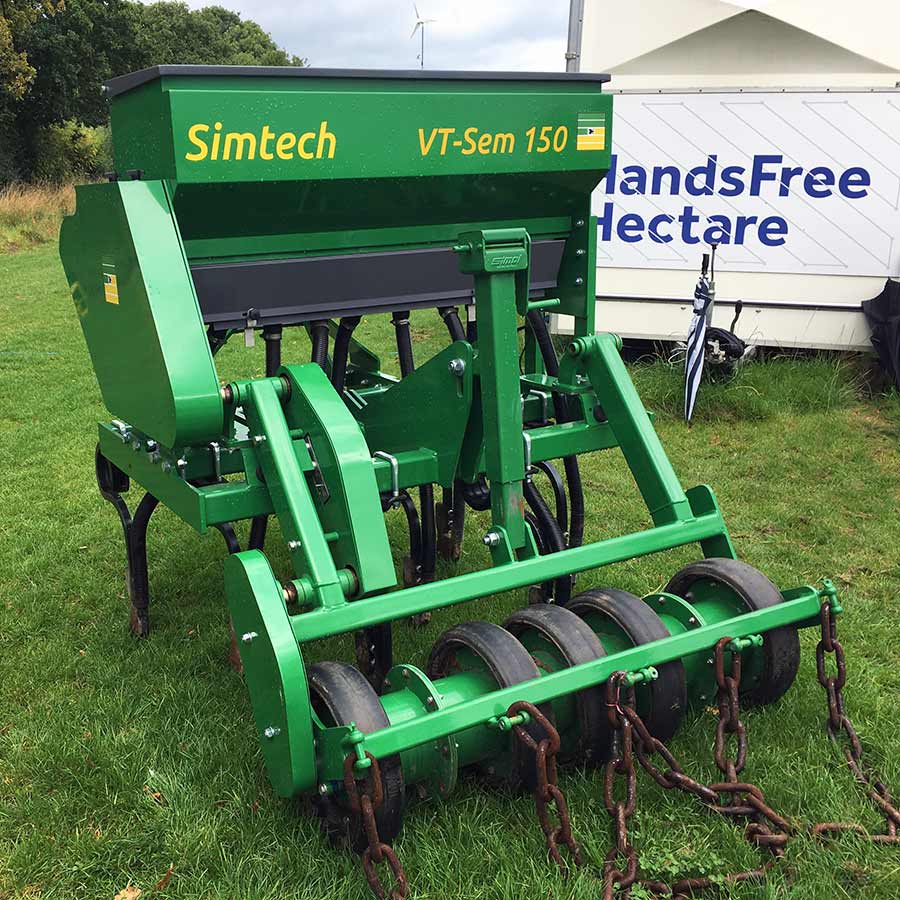Video: Hands Free Hectare – what next for the farming robots?
Excitement, pride, trepidation – just some of the feelings buzzing around a perfectly square hectare field in Shropshire as a driverless combine took its first bite of a crop that has made history.
In a world first, the team behind the ambitious Hands Free Hectare project has broken new ground by growing and harvesting a spring barley crop solely using automated machines.
No humans entered the field and all work was carried out by a small team of robot-operated machines and drones.
See also: Video: Helpful advice on autumn establishment and weed control
Watch the video and read the full report below.
But this isn’t just a one-off fantasy project for a small group of researchers at Harper Adams University – it comes out of an idea of how farming could be in the future, using technology and lines of computer code that is readily available to buy or download today.
“Farming is more than just tweed – it’s science and technology and it’s exciting. We want to inspire people and change perceptions,” says Kit Franklin, Harper Adams University lecturer and project leader.

From left: Martin Abell of Precision Decisions, robotics engineer Jonathan Gill and project leader Kit Franklin © Oli Hill
For a long time, there has been a trend towards larger, more powerful machines to allow growers to get more work done in a limited time frame, but the damage this big kit does to soils is partly to blame for stagnating yields.
When spraying, farmers are needing to cover larger areas in a short space of time which translates into sprayer booms growing ever longer, making the job less precise.

© Oli Hill
The kit
- 38hp Iseki tractor with hydrostatic drive
- 5m mounted sprayer
- 2m Sampo Rosenlew combine harvester
- 1.5m Simtech direct drill
- Eight-rotor octocopter drone with mechanical grab
The cost
- Total project: Under £200,000
- Tractor: Under £25,000
- Combine harvester: £8,000
- Automation technology: £10,000 per machine
What this technological triumph has gone a huge way to proving is that a swarm of smaller, automated machines has the potential to do the work of a larger piece of kit, while causing less damage to land and maybe even saving money in the future.
See also: Video: Northumberland farm uses drone to even up oilseed rape canopies
What’s possibly most amazing – aside from the slightly eerie sight of a driverless combine marching towards you – is the technology fitted to the tractor and combine to make them fully autonomous only costs about £10,000 per machine.
How it worked
The spring barley was direct drilled and rolled after grassland was sprayed off. The pre-emergence herbicide timing was missed because the crop emerged within three days of drilling and the team didn’t have enough time to finish converting the autonomous tractor for spraying duties.

© Oli Hill
However, T1 and T2 fungicides, fertiliser and a growth regulator were all applied on time. A drone and robot ground scout were relied upon to feed images and crop samples back to help Hutchinsons agronomist Keiran Walsh to make informed agronomic decisions.
“It has been fantastically interesting from an agronomy point of view because I couldn’t actually go into the field,” he says.
See also: A grower’s guide to buying a drone
Mr Walsh was able to do most of the agronomy remotely from Cirencester, almost 100 miles from the crop, using video calling to inspect samples and judge disease levels and growth stages.

© Oli Hill
What’s next?
Hands Free Hectare, which is jointly run by Harper Adams University staff and precision farming specialists Precision Decisions, aims to run again this coming season but this time the robots could be tasked with growing an autumn-sown crop, as this will be in the ground longer and will require more work.
An autumn-drilled cover crop followed by a spring cereal is another option. Now that the machinery is set up the ambition is to hone the technology.
See also: Two arable farmers explain how they used drones
“We want to build on what we’ve done this year. We’ve made improvements to the hardware so there should be an improvement of how the tractor and drill runs,” says Mr Franklin.
Watch the whole of our harvest in under a minute and a half! #timelapse #HFHa #ClubHectare #harvest17 #harvest2017 pic.twitter.com/EsfI4jubyx
— HandsFreeHectare & Farm (@FreeHectare) September 8, 2017
Looking further ahead, the ambition is to get these automated machines farming larger, more complicated-shaped fields, to farm a full crop rotation and even look at commercialisation.
The project is looking for more funding to continue its pioneering work.
For updates on the project you can follow Hands Free Hectare on Twitter, Facebook and YouTube.

